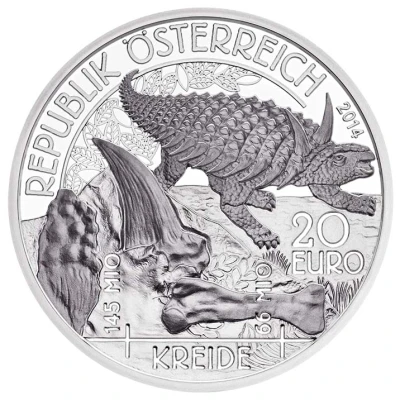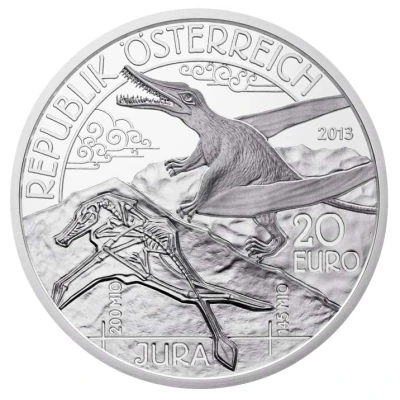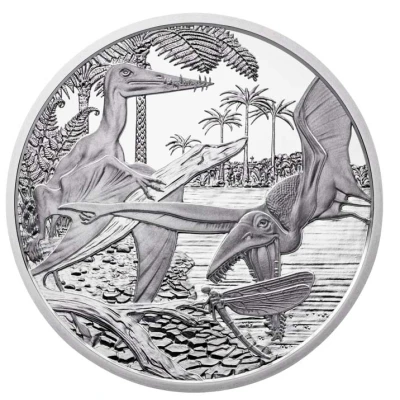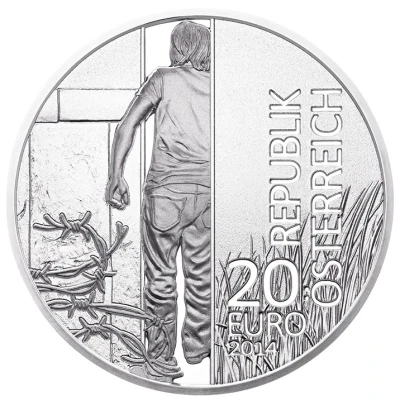


© Münze Österreich AG
20 Euros Cretaceous
2014 year| Silver (.900) | 20 g | 34 mm |
| Issuer | Austria |
|---|---|
| Period | Second Republic (1945-date) |
| Type | Non-circulating coin |
| Year | 2014 |
| Value | 20 Euros 20 EUR = USD 22 |
| Currency | Euro (2002-date) |
| Composition | Silver (.900) |
| Weight | 20 g |
| Diameter | 34 mm |
| Shape | Round |
| Technique | Milled |
| Orientation | Medal alignment ↑↑ |
| Updated | 2024-10-04 |
| Numista | N#58815 |
|---|---|
| Rarity index | 71% |
Reverse
A typical landscape from the period, in which a zalmoxes protects its eggs from a hungry struthiosaurius austriacus.
Engraver: Herbert Wähner
Edge
Reeded
Comment
Struthiosaurus (Latin struthio = ostrich + Greek sauros = lizard) is one of the smallest known and most basal genera of nodosaurid dinosaurs, from the Late Cretaceous period (Santonian-Maastrichtian) of Austria, Romania, France and Hungary in Europe. It was protected by body armour. Although estimates of its length vary, it may have been as small as 2.2 metres (7.2 ft) long.Interesting fact
The Cretaceous period, which is depicted on the coin, was a time of great diversification and evolution in the plant and animal world. It's known for the emergence of flowering plants, and the diversification of insects, birds, and mammals. It's also the period when the supercontinent Pangaea began to break apart, leading to the formation of modern-day continents.
Price
| Date | Mintage | VG | F | VF | XF | AU | UNC |
|---|---|---|---|---|---|---|---|
| 2014 | 50000 | - | - | - | - | - | - |
Values in the table are based on evaluations by sales realized on Internet platforms. They serve as an indication only for 20 Euros (Cretaceous) 2014 coin.



